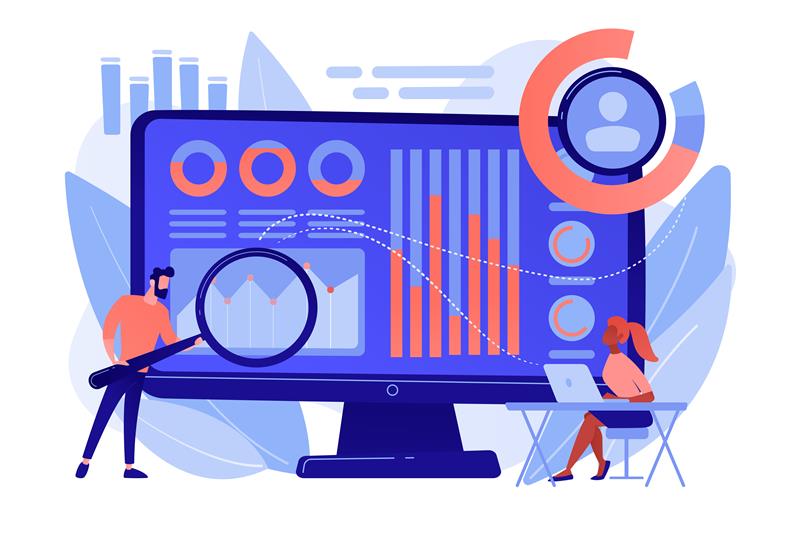Modern Approach for Test-Driven Development with AI
By incorporating AI into TDD processes, businesses are able to experience quicker cycles of development, improved test coverage, and decreased expense. With continuing advancements in AI tools, exciting opportunities such as natural language generation of tests and effortless integration into DevOps present themselves, which makes AI-enabled TDD a major win for contemporary software teams.
Test Driven Development (TDD) is a game-changing approach to software development with the structure assurance of coding. TDD – writing tests ahead of the actual code is a well established practice that ensures quality and avoids bugs. Traditional TDD may well struggle to keep up with more complex software systems. They're often slow, prone to human error, and hard to scale.
Artificial Intelligence (AI) is a disruptive force and a future shaper that is already changing or will change the way we do TDD. AI is improving TDD differently, from automating mundane activities to designing more intelligent test scenarios and providing a deep dive into code quality. AI is not only making TDD better but also disrupting TDD completely.
This article aims to talk about the integration of AI with TDD, a crucial step toward a more efficient, accurate, and scalable testing procedure. The evident necessity of this next-gen-compatible approach for the development teams cannot be overstated.
Understanding Test-Driven Development (TDD)
At its core, TDD involves three primary steps:
-
Write a Test: Developers create test cases for the desired functionality.
-
Write Code: They then write the minimum amount of code to pass these tests.
-
Refactor: Finally, the code is optimized without altering its behavior, ensuring it continues to pass the tests.
This iterative cycle promotes clean, maintainable code, aligns development with requirements, and minimizes bugs. Yet, the manual effort involved in writing and maintaining test cases can be labor-intensive, especially for complex projects.
Challenges in Traditional TDD
While TDD has its advantages, several challenges persist:
-
Time-Intensive Process: Writing tests before coding can slow down initial development, particularly for complex or rapidly changing requirements.
-
Human Error: Developers might miss edge cases or write incomplete tests, leading to coverage gaps.
-
Scalability Issues: As projects scale, maintaining many test cases can become burdensome.
-
Testing Legacy Systems: Integrating TDD into legacy systems with minimal or no existing tests is challenging.
These challenges underscore the need for innovative solutions that enhance Test Driven Development process.
How AI Enhances TDD
AI introduces capabilities that augment the traditional Test Driven Development workflow, making it more efficient and impactful.
1. Automated Test Generation
AI-driven tools can analyze codebases and automatically generate test cases, reducing manual effort. These tools can:
-
Identify edge cases that developers might overlook.
-
Generate comprehensive test suites with minimal input.
For example, AI can analyze requirements or existing code to create tests that ensure high coverage with less manual intervention.
2. Predictive Bug Detection
Machine learning models trained on historical data can predict potential problem areas in code. This enables developers to proactively focus their testing efforts, catching issues before they escalate.
3. Dynamic Test Maintenance
AI helps maintain test suites by automatically updating test cases as code changes. This is particularly beneficial in environments with frequent updates, ensuring that tests remain relevant and up-to-date.
4. Intelligent Refactoring Suggestions
AI tools provide insights into how code can be refactored for better performance and maintainability while ensuring it remains test-compliant.
5. Enhanced Test Coverage Analysis
AI-powered analytics tools assess test coverage in real-time, highlighting gaps and suggesting additional tests to improve coverage.
Benefits of Integrating AI into TDD
By merging AI with TDD, organizations can unlock a range of benefits:
-
Speed and Efficiency: Automating repetitive tasks like test creation and maintenance accelerates the TDD cycle.
-
Improved Accuracy: AI reduces the likelihood of human errors in test design and execution.
-
Cost Savings: Faster testing and reduced bugs lower development costs.
-
Scalability: AI-driven solutions handle the complexity of large-scale projects with ease.
-
Continuous Improvement: AI learns from past data to continuously improve testing strategies.
Practical Implementation of AI in TDD
Step 1: Evaluate Current Processes
Start by analyzing your existing TDD workflow to identify pain points where AI can add value. For instance:
- Are manual test creation and maintenance consuming too much time?
- Are there gaps in test coverage?
Step 2: Choose the Right Tools
Select AI-powered tools that align with your needs. Some popular options include:
-
ACCELQ: Offers AI-driven automation for TDD, enabling codeless test creation and intelligent maintenance.
-
Testim: Utilizes machine learning for dynamic test suite management and execution.
-
Diffblue Cover: Automates unit test generation with AI.
-
Mabl: Combines AI with low-code testing for continuous integration workflows.
Step 3: Train Teams
Invest in training your development team to use AI tools effectively. Emphasize collaboration between developers, testers, and AI systems to maximize benefits.
Step 4: Start Small
Implement AI in a pilot project to measure its impact and refine the approach before scaling.
Step 5: Monitor and Optimize
Continuously monitor the performance of AI-enhanced TDD processes, gathering feedback and optimizing tools and workflows.
Future Trends in AI and TDD
The integration of AI and TDD is evolving rapidly. Here are some trends to watch:
-
Natural Language Test Creation: AI models like ChatGPT enable developers to describe test cases in plain language, automatically generating the corresponding code.
-
Integration with DevOps Pipelines: AI-enhanced TDD tools seamlessly integrate with CI/CD pipelines, ensuring real-time testing and feedback.
-
Explainable AI: Tools that provide clear reasoning behind test generation decisions enhance trust and usability.
-
Collaborative AI: Future tools will act as co-developers, actively suggesting tests, writing code, and improving quality.
Conclusion
The integration of AI and Test-Driven Development represents a natural evolution in software development. While automating pitiful jobs, foreseeing trouble spots, and keeping tests in sync with constantly evolving ecosystems, AI brings new energy to TDD. This goes beyond simply keeping pace with trends—it’s about maintaining an edge in a cutthroat landscape in which speed and quality are critical.
Developers will find that realizing TDD with AI gives them faster workflows, improved test coverage, and cost savings. AI tools are becoming more intelligent and intuitive, and their ability to complement and advance TDD can only grow.
The future of software development is here, and AI powers it. Are you ready to embrace it?

Subscribe & get all related Blog notification.





Post your comment